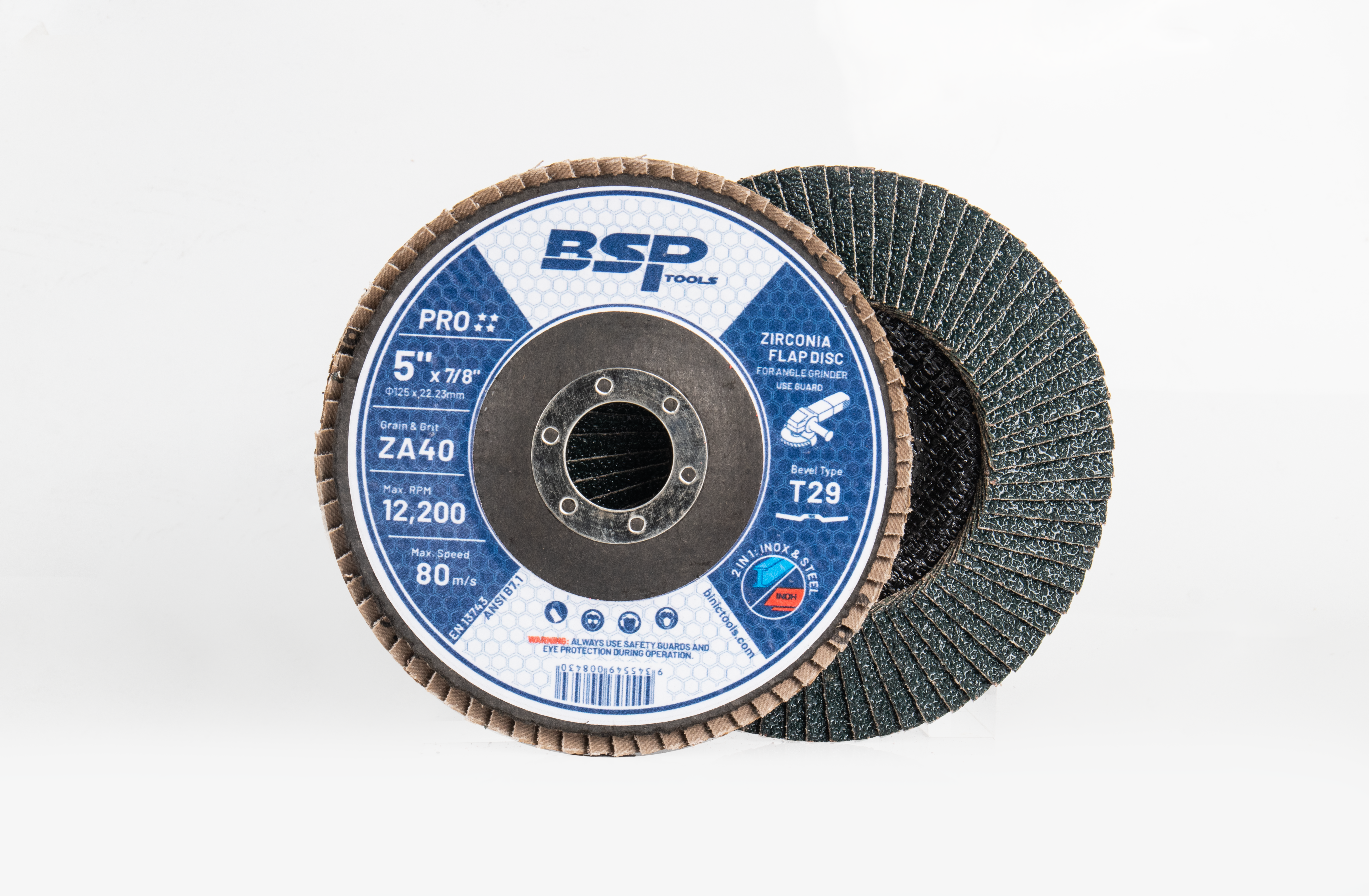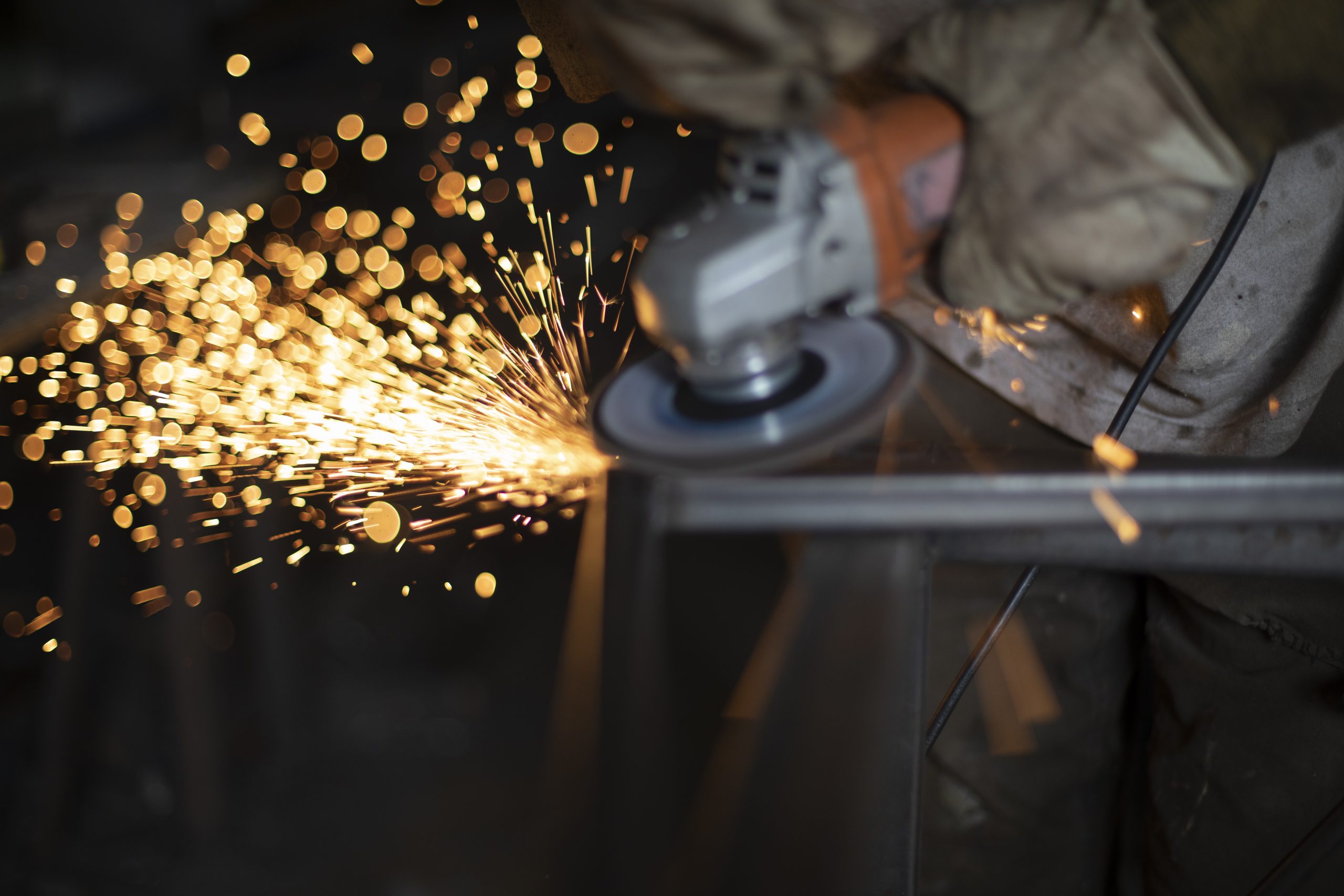Welding is a versatile and essential skill in various industries, from construction and automotive to metalworking and DIY projects. It involves joining pieces of metal together, creating strong and durable bonds. However, welding isn’t just about the act of joining; it also encompasses the preparation and finishing of welded joints. When it comes to finishing, choosing the right abrasive tools is crucial. One of the most popular options for finishing and grinding in welding is the flap disc. In this article, we will explore the different grits of flap discs and how to choose the right one for your metal welding projects.
What is a Flap Disc?
Before we dive into the details of choosing the right grit flap disc, let’s first understand what a flap disc is. A flap disc is an abrasive tool used for grinding, blending, and finishing metal surfaces. It consists of multiple overlapping, bonded abrasive flaps that are affixed to a backing plate. These abrasive flaps are typically made from aluminum oxide, zirconia alumina, or ceramic materials, which determine their cutting ability and durability.
Flap discs come in various sizes, with 4.5-inch and 7-inch diameters being common choices for welding applications. They are compatible with angle grinders and are easy to attach, making them a popular choice for welders and metalworkers. The key advantage of flap discs is their versatility; they can be used for a wide range of tasks, including removing rust, deburring, surface blending, and even polishing, all with a single tool.
Understanding Grit in Flap Discs
The term “grit” in the context of flap discs refers to the size of the abrasive particles on the disc. Grit size is a crucial factor to consider when choosing a flap disc for your welding projects, as it directly affects the disc’s cutting ability and finish quality. Grit sizes are denoted by numbers, and lower numbers indicate coarser grits, while higher numbers indicate finer grits.
Common Grit Ranges in Flap Discs
- Coarse Grits (24-60): Coarse grit flap discs are used for heavy material removal and aggressive grinding. They are suitable for tasks such as removing weld spatter, rough shaping, and deburring. The lower grit numbers, such as 24 or 36, are ideal for rapid material removal but leave a rough surface finish.
- Medium Grits (80-120): Medium grit flap discsstrike a balance between material removal and surface finish. They are great for preparing the metal surface before painting or applying coatings, as well as for general-purpose grinding and blending. Grits like 80 or 100 provide a smoother finish compared to coarser grits.
- Fine Grits (150-320): Fine grit flap discs are used for finishing and polishing. They are excellent for achieving a smooth, polished surface on metal and removing small imperfections left by coarser grits. These finer grits, such as 180 or 240, are often used for creating a smooth, paint-ready surface.
Choosing the Right Grit for Your Welding Projects
Selecting the appropriate grit flap disc is essential for achieving the desired finish and efficiency in your welding projects. The choice largely depends on the specific task at hand, the type of metal you’re working with, and your skill level. Here’s a breakdown of different welding tasks and the corresponding grits to use:
- Weld Spatter Removal:
For rapid removal of weld spatter and rough shaping, use a coarse grit flap disc (24-36 grit).
After initial removal, switch to a medium grit flap disc (80-100 grit) to achieve a smoother surface.
- Surface Blending and Preparation:
When blending the weld seams and preparing the metal surface for paint or coating, medium grit flap discs (80-120 grit) are your best choice.
Start with a coarser grit if the weld seams are pronounced and gradually move to finer grits for a smoother finish.
- Deburring:
For removing sharp edges, burrs, and irregularities, medium grit flap discs (80-100 grit) are suitable.
In cases where you need a high-quality, burr-free finish, you can transition to fine grit flap discs (180-240 grit) for fine deburring.
- Surface Finishing and Polishing:
If you aim to achieve a polished, mirror-like finish on your welded metal, fine grit flap discs (180-320 grit) are your go-to choice.
Use progressively finer grits to refine the surface and achieve the desired level of polish.
- Paint Removal and Rust Removal:
For removing paint, rust, or coatings, start with a medium grit flap disc (80-100 grit) for efficient material removal.
If you need a smoother surface after removing paint or rust, consider using a finer grit flap disc (180-240 grit).
Tips for Effective Flap Disc Use
To maximize the performance and lifespan of your flap discs in welding projects, consider the following tips:
- Safety First: Always wear appropriate personal protective equipment, including safety glasses, a dust mask, and hearing protection, when using flap discs.
- Choose the Right RPM:Ensure that your angle grinder is set to the recommended RPM (Revolutions Per Minute) for the specific flap disc you are using.
- Maintain Consistent Pressure: Apply even and consistent pressure to the flap disc to prevent uneven wear and gouging.
- Use the Right Angle: Hold the angle grinder at the appropriate angle for the task at hand. Typically, a 15-20-degree angle to the workpiece is recommended.
- Keep the Disc Flat: Maintain a flat and level angle between the flap disc and the workpiece to avoid digging in or gouging.
- Work in Stages: If your project requires a smooth finish, work in stages, starting with a coarser grit and progressing to finer grits.
- Keep the Disc Clean: Periodically clean the flap disc by tapping it against a hard surface to remove accumulated debris.
Conclusion
In welding projects, selecting the right grit flap disc is crucial for achieving the desired finish, whether it’s removing weld spatter, preparing surfaces for paint, or achieving a polished look. Understanding the various grit ranges and their applications is key to making the right choice for your specific welding task. By following the tips for effective flap disc use, you can maximize the performance and longevity of these versatile tools. So, the next time you tackle a welding project, be sure to choose the appropriate grit flap disc to get the job done efficiently and effectively.


